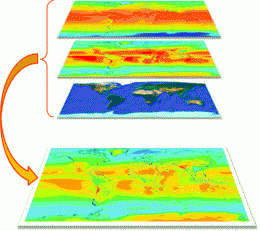New Saudi Arabias of solar energy: Himalaya Mountains, Andes, Antarctica

Mention prime geography for generation of solar energy, and people tend to think of hot deserts. But a new study concludes that some of the world's coldest landscapes -- including the Himalaya Mountains, the Andes, and even Antarctica -- could become Saudi Arabias of solar. The research appears in the ACS journal Environmental Science & Technology.
Kotaro Kawajiri and colleagues explain that the potential for generating electricity with renewable solar energy depends heavily on geographic location. Arid and semi-arid areas with plenty of sunshine long have been recognized as good solar sites. However, the scientists point out that, as a result of the limited data available for critical weather-related conditions on a global scale, gaps still exist in knowledge about the best geographical locations for producing solar energy.
To expand that knowledge, they used one established technique to estimate global solar energy potential using the data that are available. The technique takes into account the effects of temperature on the output of solar cells. Future work will consider other variables, such as transmission losses and snow fall.
As expected, they found that many hot regions such as the U.S. desert southwest are ideal locations for solar arrays. However, they also found that many cold regions at high elevations receive a lot of sunlight — so much so that their potential for producing power from the sun is even higher than in some desert areas. Kawajiri and colleagues found, for instance, that the Himalayas, which include Mt. Everest, could be an ideal locale for solar fields that generate electricity for the fast-expanding economy of the People's Republic of China.
More information: Effect of Temperature on PV Potential in the World, Environ. Sci. Technol., Article ASAP. DOI: 10.1021/es200635x
Abstract
This work aims to identify the geographic distribution of photovoltaic (PV) energy potential considering the effect of temperature on PV system performance. A simple framework is developed that uses the JIS C 8907 Japanese industrial standard to evaluate the effects of irradiation and temperature on PV potential. The global distributions of PV potential and yearly performance ratio are obtained by this framework. Generally, the performance ratio decreases with latitude because of temperature. However, regions with high altitude have higher performance ratios due to low temperature. The southern Andes, the Himalaya region, and Antarctica have the largest PV potentials. Although PV modules with less sensitivity to temperature are preferable for the high temperature regions, PV modules that are more responsive to temperature may be more effective in the low temperature regions. The correlation between the estimates obtained by our framework and results from a more data-intensive method increases when the temperature effects are considered.
Provided by American Chemical Society

















